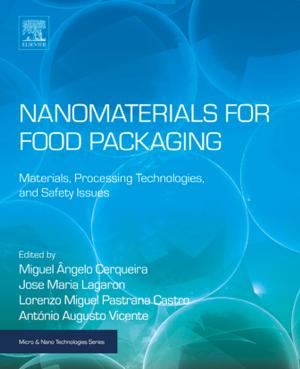Sweet Potato
Chemistry, Processing and Nutrition
Nonfiction, Science & Nature, Technology, Food Industry & Science, Agriculture & Animal Husbandry| Author: | ISBN: | 9780128136386 | |
| Publisher: | Elsevier Science | Publication: | May 18, 2019 |
| Imprint: | Academic Press | Language: | English |
| Author: | |
| ISBN: | 9780128136386 |
| Publisher: | Elsevier Science |
| Publication: | May 18, 2019 |
| Imprint: | Academic Press |
| Language: | English |
Sweet Potato: Chemistry, Processing, and Nutrition presents foundational information, including identification, analysis, and use of chemical components from sweet potato in a variety of food and nonfood uses.
Sweet potatoes can be easily propagated, are rich source of carbohydrates and functional components, and are highly productive, which makes them most suitable for production of staple and functional foods. With the increasing population and the challenges of providing healthy food to the world, there is an increasing consumer demand for new and better sweet potato products, particularly for those in developing countries.
Providing a brief description of the specific sweet potato components, their role during processing and strategies for quality optimization, this book also explores novel methods of sweet potato starch, protein, and pectin modification providing students, researchers, and technologists working in the area of food science and others with the most recent information and state-of-the-art technology for developing new and beneficial uses of sweet potato.
- Includes identification, analysis, and use of chemical components of sweet potatoes
- Presents case studies including problem, factors, proposed solutions, and pros and cons of each
- Allows readers to identify an appropriate solution efficiently and effectively
Sweet Potato: Chemistry, Processing, and Nutrition presents foundational information, including identification, analysis, and use of chemical components from sweet potato in a variety of food and nonfood uses.
Sweet potatoes can be easily propagated, are rich source of carbohydrates and functional components, and are highly productive, which makes them most suitable for production of staple and functional foods. With the increasing population and the challenges of providing healthy food to the world, there is an increasing consumer demand for new and better sweet potato products, particularly for those in developing countries.
Providing a brief description of the specific sweet potato components, their role during processing and strategies for quality optimization, this book also explores novel methods of sweet potato starch, protein, and pectin modification providing students, researchers, and technologists working in the area of food science and others with the most recent information and state-of-the-art technology for developing new and beneficial uses of sweet potato.
- Includes identification, analysis, and use of chemical components of sweet potatoes
- Presents case studies including problem, factors, proposed solutions, and pros and cons of each
- Allows readers to identify an appropriate solution efficiently and effectively















